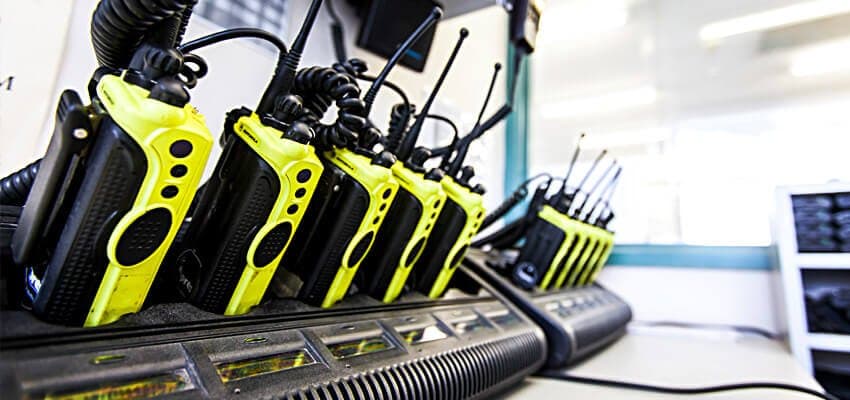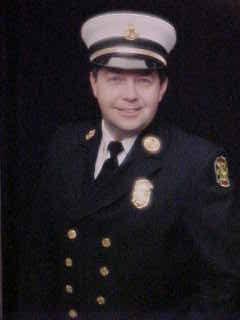When a firefighter joins the fire service, they are given training on operating hose line, throwing ladders and using a self-contained breathing apparatus; but not much time is given to train them on how to properly use a radio. I can hear the readers first thought; how hard can it be to operate a radio, you just need to push the button and talk. Yes that is true to a point, but we need to show our firefighters two things. First is the care, maintenance and use of the radio and secondly how to properly use the radio to communicate.
1. Care and Maintenace
The care and maintenance of a radio is very important to keep it functional and for it to be able to work when you need it. The power supply to your portable radio is its battery; there should be two batteries assigned to each portable radio so that you can charge one while the other one is in use. You should also have a cache of charged batteries available for long duration incidents where going back and forth to the station to charge them would not be feasible. Many departments are having individual or bank chargers installed on new trucks so the radio can sit in the charge and be kept in a state of constant trickle charging. Portable batteries have a memory built into them and over time the number of hours a battery will hold a charge will drop and will not last as long as before. The maintenance solution for this is to purchase a bank charger with a conditioner built into it. The battery conditioner will work its magic and analyze the battery to tell you the percent of useful battery operation it has. Personally, I had always set the minimum battery life at 80% so when I tested group of batteries and looked at the results I would take all the batteries that were less than 80% and I could get them back up into the 90%+ range in a few hours. Depending on the size of the department and number of batteries, you may be able to get away with purchasing just one of these units. All batteries should have an inventory number painted or engraved on it so you can keep track of what batteries have been tested, when and the results should be logged; this will give you an idea of how many batteries you may have to replace in the future.

2. Where to keep the radio
Now you have to think about where the firefighters going to keep this radio when they are fighting a fire. Is it in their hand, in a special pocket on their turn out jacket or in a harness under the turn out jacket? We would like to keep the radio in a place to protect it as much as possible but it still has to be accessible to be able to change channels if you need to. Many departments are using their radios with collar microphones that allow the user to change channels and to hit an emergency alert button; these are all things that you need to consider when you are planning to purchase new portable radios. Just because you purchase a radio and you plan to use it for firefighters does not mean that it is water proof, how strange does that sound but it is true. You should field test new radios that you would like to purchase to see how well they operate under fire ground conditions. I have seen collar microphone short out and not work when they have gotten wet.The radio user needs to understand how important this piece of equipment is and must treat it with the respect it deserves because when you are in a bad situation and need that radio to call for help, you want and need it to work. After a fire, you will want to take the time to clean it off and get the plaster dust and dirt off so it will not get all over your clean uniform and will look presentable when you are out doing inspections or a school visit.

3. How to operate the radio
The next step is learning how to actually operate the radio. Again, yes it is as simple as pressing the button and talking, but radios today have many buttons, dials and changeable settings that you need to know how to set up to get it to operate properly. Radios have scan features that allow you to listen to multiple frequencies at the same time but only talk on the one you have the dial set to. I have seen firefighters who were a few hours earlier listening to a fire in another city on their radio and forgot to change the channel back to their hometown frequency. They attempted to use the radio at their next call but ended up talking on the other city’s frequency. When a department purchases a new style of portable radio, they should require the company they purchase them from to provide a few days of training. The members will be able to see all the different features and learn how to access them, what channels are programmed into the radio, are there different radio frequency banks, are they set up by zone or use group? What channel is designated as the fire ground frequency? Are there channels for special mutual aid communications? Are there channels for hazardous materials operations or command & control operations? When you press that button, do you have to wait to hear the radio frequency carrier open so you can talk through the repeater?
I did not spend time talking about mobile radios in the apparatus and cars, but they will have all the same issues minus the portable battery considerations. Take the time to learn how to properly use your radio and care for it so it will be there for you.
As I write this article today, news is coming in from Iran of a fire in a 17-story high rise building with a total collapse and a report of an estimated 30+ firefighters have been killed. Please keep our international brothers in your thoughts, we may be from different countries and our government may not always agree on what is right and wrong but we are there for our citizens to save and protect them. RIP my brother.














